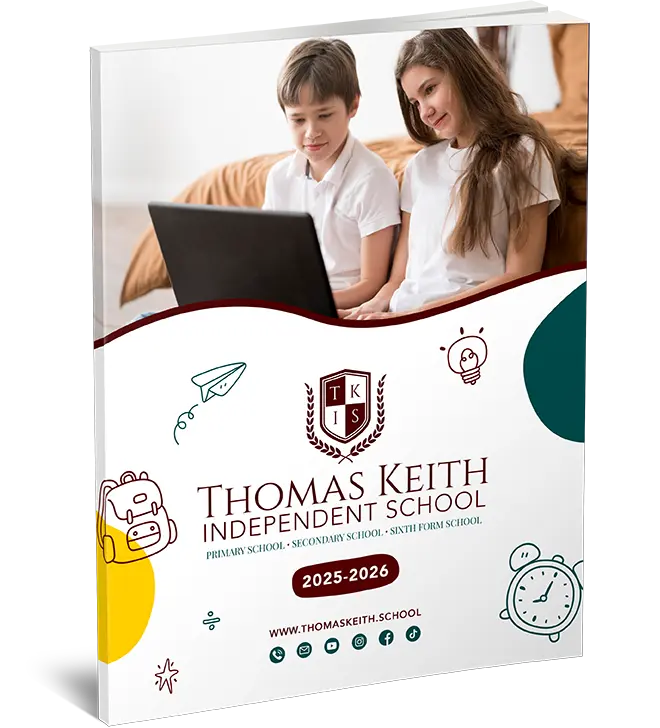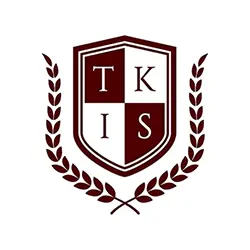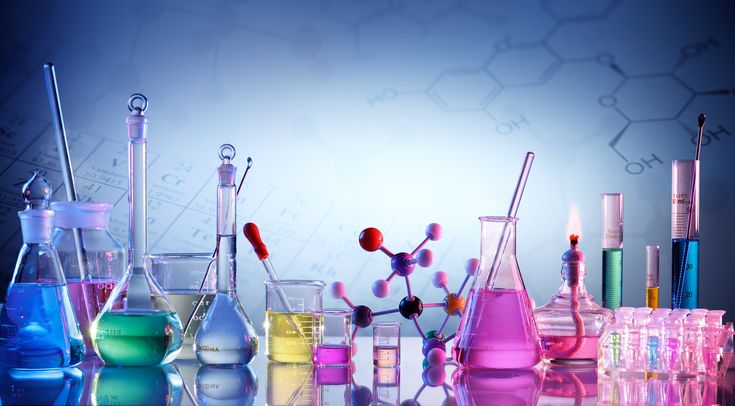Introduction to A-Level Physics Required Practicals
The A Level Physics required practicals are a fundamental component of the curriculum, essential for students to develop critical experimental skills and a deeper understanding of physics concepts.
Did you know that practical assessments make up a significant portion of your A‑Level Physics grade, and yet many students still underestimate their impact?
At Thomas Keith Independent School, we know that mastering the required practicals is the key to deepening your grasp of physics, from the laws of motion to the behaviour of circuits under load.
In this blog, you’ll discover why hands‑on experiments are indispensable for linking theory with real‑world phenomena, learn how to set up and use essential apparatus with precision and safety, and see how tools like video analysis and data logging can sharpen your results.
We’ll also walk you through the full suite of AQA’s mandated practicals—whether you’re measuring gravitational acceleration or exploring electrical energy transfers—so you can build confidence in the lab and turn practical skills into exam success.
Understanding the Importance of Practical Skills in Physics
The A-Level Physics required practical is an integral component of the AQA A-Level Physics curriculum, and its importance cannot be overstated.
Practical skills play a pivotal role in understanding the core concepts of physics.
At Thomas Keith Independent School, we believe that practical experimentation brings textbook theories to life, allowing students to witness firsthand the principles they learn in class.
Engaging in A-Level Physics requires practicals, which facilitate a deeper comprehension of scientific phenomena that cannot be achieved through theory alone.
One of the central aims of these practicals is to foster critical thinking and analytical skills in students.
By performing experiments, students learn to question, hypothesise, and validate their assumptions through systematic observation and measurement.
The practical skills acquired through A-Level Physics required practicals are not only crucial for excelling academically but are essential for future scientific endeavours.
These experiences prepare students for potential careers in the scientific field by equipping them with the tools and confidence necessary for independent experimentation and investigation.
Furthermore, practicals reveal the empirical nature of physics, demonstrating that robust conclusions stem from precision and accuracy.
Students gain experience in handling various apparatus and develop a keen sense of safety, which is paramount in scientific experiments.
The necessity of A-Level Physics required practicals is also reflected in their ability to cultivate a collaborative spirit among students.
Group experiments encourage teamwork, communication, and the sharing of ideas, which is invaluable in both academic and professional settings.
Mastering these skills through AQA A-Level Physics practicals ensures that our students at Thomas Keith Independent School are well-prepared for further education and careers in the scientific domain.

Apparatus and Setup Guides for A-Level Physics Practicals
A-level physics required practicals are pivotal in bridging theoretical concepts with real-world experimentation, and understanding the correct apparatus and setup is essential for accuracy and success in these practicals.
At Thomas Keith Independent School, we aim to provide students and teachers with comprehensive guides on how to effectively set up and use the apparatus for each experiment.
The proper configuration of equipment not only ensures precision but also enhances the learning experience by reflecting the scientific principles in action.
In the context of AQA A Level Physics Practicals, the apparatus selection and setup often vary depending on the specific experiment.
For instance, determining the acceleration due to gravity involves equipment like a retort stand, a timer, and a metre ruler.
Each piece of equipment used in a level physics practical serves a specific purpose.
The retort stand provides a stable framework to suspend objects, the timer measures the duration accurately, and the metre ruler helps in precise measurement of distances.
Understanding the use of each apparatus aids students in following scientific methods rigorously.
The setup also involves ensuring safety measures are in place, particularly when experiments involve electricity or moving parts.
The correct setup mitigates risks and ensures students focus on achieving accurate results rather than troubleshooting preventable errors.
Teachers play a crucial role in this by guiding students through step-by-step instructions and demonstrating best practices firsthand.
Additionally, incorporating modern technology, such as data loggers and video analysis tools, can further enhance understanding.
These tools allow for more detailed data collection and provide an opportunity to analyse experiments in greater depth.
For students, hands-on experience with different apparatus in a level physics required practicals helps them develop confidence and competence in practical science skills.
This skill set is foundational for further education in physics and related fields.
By mastering the apparatus and setup, students not only fulfil curriculum requirements but also gain a versatile toolkit of scientific problem-solving.
Accurate setup in a level physics required practicals is vital for yielding meaningful data and fostering a robust learning environment.
At Thomas Keith Independent School, our focus remains on providing resources that empower both students and teachers to navigate these challenges efficiently.
Determination of Gravitational Acceleration (g)
The determination of gravitational acceleration, often represented as ‘g’, is a crucial component of the A-level physics required practicals.
This experiment not only forms a fundamental part of the AQA A-level physics curriculum but also provides an essential understanding of how forces act in nature.
Accurate determination of ‘g’ helps students appreciate the principles underlying free fall and motion under gravity, aligning well with core physics concepts.
To carry out this A-level physics required practical, the primary method involves measuring the time it takes for an object to fall a known distance.
The apparatus typically includes a metre ruler, a timer or data logger, and a small dense object to minimise air resistance.
The experimental setup requires careful attention to minimise errors and improve precision.
It’s beneficial to use a precise timing method, such as electronic timing systems, that reduces human reaction time errors.
Using video recording can also assist in capturing the motion, which can then be analysed frame-by-frame to ensure accuracy.
The value of gravitational acceleration ‘g’ is approximately 9.81 m/s² on Earth; however, experimental readings may vary slightly due to factors like air resistance and equipment precision.
Various alternative methods can also be employed, such as using a pendulum or an inclined plane to find ‘g’.
These methods can provide supplementary data to compare results and understand the experimental limitations.
The meticulous approach to this A-level physics requires practical work, which develops a student’s analytical skills, allowing them to critically evaluate experimental techniques and refine their methodologies.
Engagement in this practical work not only reinforces theoretical knowledge but also equips students with the skills necessary for empirical research.
As educators at Thomas Keith Independent School, our objective is to ensure that students not only grasp the procedural undertakings of this experiment but also the underlying physics concepts.
The AQA A-level physics practicals thereby play an instrumental role in preparing students for advanced study or careers in science, where precise measurement and analytical skills are paramount.
Experimentation Techniques and Safety Measures
In A-Level Physics, mastering experimentation techniques and adhering to safety measures is crucial for conducting the AQA A-Level Physics practicals effectively.
These practicals provide students with hands-on experience, allowing them to explore and understand complex scientific concepts in a real-world context.
The A-level physics required practical not only focuses on theoretical understanding but also emphasises the application of practical skills in a safe laboratory environment.
Implementing appropriate experimentation techniques begins with understanding the specific objectives and methodologies of each practical task.
This involves a meticulous examination of the experimental procedures and the correct usage of scientific apparatus, including devices like the voltage logger and thermometer.
Such attention to detail ensures accurate data collection, which is vital for producing reliable results.
Safety measures, an integral component of the A-level physics required practical, include wearing appropriate personal protective equipment, such as lab coats and safety goggles.
Additionally, maintaining a clear workspace, proper handling of equipment, and awareness of emergency procedures are fundamental in preventing accidents and ensuring a safe learning environment.
It is also imperative to follow the guidelines provided in the AQA A-Level Physics practicals, which help in maintaining consistency and accuracy across different experimental setups.
Incorporating technology into experimentation has enhanced the quality and safety of A-Level physics practicals.
For instance, video demonstrations and recorded experiments allow students to review techniques and safety protocols repeatedly, reinforcing learning.
In summary, understanding and implementing correct experimentation techniques and safety measures not only enhances the learning experience in the A-level physics required practical but also prepares students for advanced scientific exploration.
By focusing on these aspects, Thomas Keith Independent School aims to provide an enriched educational journey, empowering students with the skills necessary for both academic and real-life scientific endeavours.
Using Technology in Physics Practicals: Video and Data Logging
In the context of an A-Level Physics required practical, leveraging technology such as video and data logging can significantly enhance the learning experience and accuracy of experimental observations.
At Thomas Keith Independent School, we emphasise the integration of technology to ensure that students gain a comprehensive and precise understanding of the A-level physics required practicals.
Video recording during physics practicals allows students to capture experiments in real-time, which can be reviewed for better analysis and understanding.
By using mobile phone cameras or video cameras, students can record experiments, enabling them to freeze rapidly changing phenomena, such as capacitor discharge or voltage changes, and examine each stage slowly.
This visual record aids in critical analysis and ensures that data is accurately captured, allowing students to replay the experiment to identify any procedural errors or to observe phenomena that might have been too quick for initial observation.
Data logging, meanwhile, refers to the electronic recording of experimental data, often through the use of sensors and software.
For instance, it allows for the real-time recording of voltage or internal resistance changes during an experiment.
This can be particularly useful when determining energy-related changes in an AQA A-Level Physics practical.
Utilising data loggers minimises human error in recording measurements and supports a detailed and efficient data analysis process.
Data loggers can collect data at a much higher frequency than manual recording and can be left unattended to measure over long periods.
Incorporating these technologies in physics practicals not only supports a more accurate measurement process but also familiarises students with tools and techniques they are likely to encounter in higher education and professional settings.
Moreover, these tools often come with software that facilitates graph plotting and trend analysis, making it easier for students to interpret and draw conclusions from their experiments.
This hands-on experience with technology equips students with practical skills that are increasingly relevant in scientific research and industry settings.
In conclusion, video and data logging are indispensable tools in the modern A-Level Physics classroom.
By integrating these technologies into a level physics required practicals, Thomas Keith Independent School aims to provide students with a robust educational experience that bridges theoretical knowledge with practical application.

Analyzing Results and Drawing Conclusions
In the realm of A-level Physics, required practicals involve analysing results and drawing conclusions, which form the backbone of experimental science.
This step is crucial as it allows students to make sense of the data collected and relate it to the underlying physical principles.
The AQA A-level Physics practicals focus on nurturing these analytical skills, given their importance in both academics and scientific research.
Firstly, when analysing results, it is critical to organise the data coherently.
Students should begin by representing data graphically, where applicable, as visual aids like graphs and charts can often reveal patterns and trends more effectively than raw numbers.
For instance, plotting the discharge of a capacitor can visually illustrate the exponential nature of the decay, offering deeper insights than merely glancing at numerical values.
A well-labelled graph with correctly identified axes can lead to observations that form the basis of meaningful conclusions.
Moreover, understanding errors and uncertainties is vital in the context of A-level Physics required practicals.
Quantifying uncertainties allows for an accurate assessment of how reliable and valid the results are.
Students should be encouraged to compute percentage errors and discuss error propagation, as these factors significantly impact the integrity of the conclusions drawn.
This aspect of the practicals ensures that students not only interact with physics concepts but also with the methodologies scientists use to ensure their hypotheses withstand scrutiny.
Once the data has been thoroughly analysed, the next step is to draw conclusions that directly relate to the initial hypothesis.
The conclusions should summarise the key findings and specify whether the data supports the initial predictions made prior to the experiment.
During AQA A-level Physics practicals, students should be encouraged to include suggestions for improvement, reflecting on why certain results were unexpected and how future experiments could be better controlled.
This reflection is not only an exercise in critical thinking but also a fundamental aspect of scientific advancement.
Finally, sharing these conclusions with peers or in a classroom setting can lead to discussions that further entrench the student’s understanding.
A classroom debate or peer review session can expose students to different perspectives and interpretations of the same data, fostering a collaborative learning environment.
At Thomas Keith Independent School, we stress the importance of these skills by integrating them into our curriculum, empowering students with the tools they need to excel in A-level Physics and beyond.
Common Challenges and Alternative Suggestions
In the context of an A-Level Physics required practical, students often encounter a variety of challenges that can impact the accuracy and reliability of their results.
Understanding these common challenges and exploring alternative suggestions to mitigate them is crucial for successful experimentation.
This section will discuss some prevalent issues faced during a level physics required practicals and provide insightful recommendations to overcome them.
One of the most common challenges in a level physics required practicals is the inaccurate measurement of physical quantities.
Instruments such as voltmeters, ammeters, and thermometers are essential for AQA A Level physics practicals, but their precision can significantly affect outcomes.
An alternative suggestion is to ensure that these instruments are correctly calibrated before use.
Students should always cross-verify measurements with alternative methods, such as using a multimeter or digital sensors for higher accuracy.
Another challenge is the handling of systematic and random errors.
Systematic errors, often caused by faulty apparatus or biased procedures, require attention to detail in every step of a level physics required practicals.
An effective suggestion to address this issue is regular equipment maintenance and adopting standardised measurement techniques.
Random errors, which are typically due to unpredictable fluctuations in readings, can be alleviated by taking multiple measurements and calculating an average value to improve reliability.
Environmental factors like temperature, humidity, or external interference also play a significant role in the accuracy of the results obtained in a level physics required practicals.
An alternative strategy to mitigate these issues is conducting experiments in a controlled environment where such variables are kept constant.
For example, when dealing with experiments that require a stable temperature, utilising a thermostatically controlled environment can be beneficial.
Lastly, the complexity of certain procedures in AQA A Level physics practicals may lead to incorrect execution by the students.
This can be addressed through comprehensive preliminary sessions, where teachers demonstrate the entire process before students attempt it themselves.
Utilising digital resources, such as instructional videos, can also support students in visualising and understanding the required steps more clearly.
In conclusion, it is essential to anticipate and address the common challenges encountered in a level physics required practicals.
By implementing alternative suggestions such as precise instrumentation, error management strategies, environmental control, and enhanced instructional methods, students can significantly improve the quality and accuracy of their experimental results.
Thomas Keith Independent School encourages students to embrace these suggestions to maximise their learning outcomes and practical skills in the field of physics.
Resources for Teachers and Students
Navigating the A-level physics required practical can be a demanding task for both teachers and students alike.
Having access to comprehensive resources can significantly enhance the learning experience and optimise the understanding of essential concepts in physics.
These resources not only provide clarity but also ensure that the learning objectives of AQA A Level Physics Practicals are met efficiently.
For teachers, implementing effective instructional methods is paramount in aiding students through the complexities of a level physics required practical.
Utilising videos and interactive simulations can offer an alternative approach to traditional teaching, ensuring that the information is both engaging and informative.
Websites and digital platforms often offer downloadable material, including detailed guides on the required practical experiments, enabling teachers to prepare thoroughly ahead of time.
Students, on the other hand, benefit immensely from resources that allow for self-guided learning and revision.
Online portals like AQA and educational forums are replete with revision notes, exam questions, and video content that cover each A-level physics required practical in detail.
These resources serve as invaluable tools for students looking to deepen their knowledge and enhance their experimental techniques.
An effective combination of teacher-led instruction and self-study can pave the way for mastery of the subject matter, ensuring that students are well-prepared not only for examinations but also for real-world applications of physics principles.
As part of the Thomas Keith Independent School, we recommend subscribing to reputable educational channels and utilising digital tools to facilitate a more interactive and comprehensive learning environment.
With consistent access to well-structured resources, both teachers and students can navigate the demands of a level physics required practical with confidence.

Conclusion: The Role of Practical Work in Physics Education
In the realm of physics education, the A-Level physics requires practical work to play a pivotal role in bridging the gap between theoretical concepts and real-world applications.
Practical work enables students to directly engage with the material, transforming abstract equations and theories into tangible experiences.
This hands-on approach is particularly evident in AQA A-Level physics practicals, where students are exposed to a variety of experiments, enhancing their comprehension and retention of the subject matter.
A-Level physics required practicals not only reinforce theoretical knowledge but also help students develop essential scientific skills, such as accurate measurement and data analysis.
By working through these practicals, students cultivate critical thinking and problem-solving abilities, which are vital skills both within and beyond the field of physics.
In our experience at Thomas Keith Independent School, these practicals are invaluable in preparing students for further academic pursuits and careers in science and technology.
Furthermore, A-Level physics requires practicals that foster a deeper appreciation of the scientific process by encouraging students to formulate hypotheses, conduct experiments, and evaluate outcomes.
This iterative process is at the heart of scientific investigation, and engaging in such practice during their formative years lays a strong foundation for future scientific inquiry.
In conclusion, practical work in physics education is indispensable for effective learning and development.
The emphasis on A-Level physics required practicals in the curriculum reflects a commitment to producing competent, inquisitive, and scientifically literate individuals.
At Thomas Keith Independent School, we recognise the significance of such practicals and strive to provide the best resources and support to our students, ensuring they are well-prepared for their future endeavours in the world of science.




